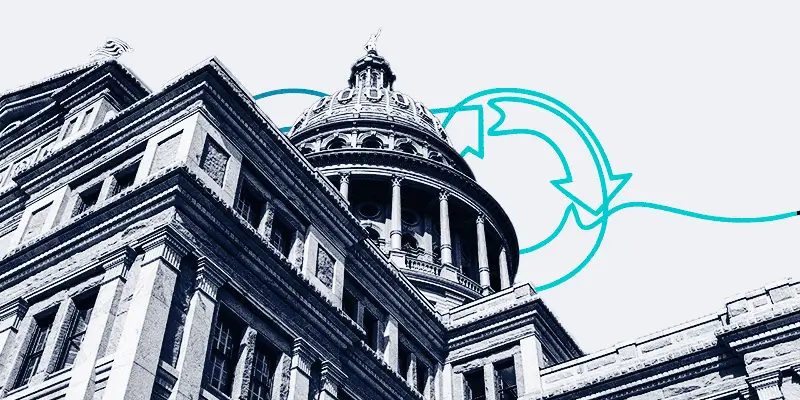How reliable is your data? Are you confident that you have access to strong information? Anything less than a resounding yes means you can benefit from a Salesforce data governance plan.
Data governance is a combination of principles and practices with the goal of maintaining a quality pool of data.
Internally defined standards guide these efforts to categorize and manage your Salesforce data. Click here to read our blog outlining the various benefits that can be seen from taking the time to ensure your data is reliable.
Assistance with planning, finding and rectifying errors, assisting compliance, and more are made possible through an effective Salesforce data governance plan. But how do you get the process started? What are the first steps to work toward Salesforce data governance? And how do you establish a team to get the most from these efforts?

Here are 6 essential aspects of putting together a Salesforce data governance team:
1. Define a Salesforce Data Governance Strategy
What do you hope to accomplish with your Salesforce data governance efforts? This simple question will help guide the rest of your decisions as you build out the strategy and the team to accomplish it. This initial planning phase should include high ranking members of your organization to set the foundation your data governance strategy will be built upon.
Put together a strategy that includes considerations such as the goals of the program and a mission statement that outlines them.
This mission statement will include some of the specifics that we will be discussing shortly, such as the framework and the various roles that will need to be filled. Aside from the basic mechanics of your data governance strategy, this stage will also outline the standards for your data along with how wide reaching these efforts will be.
2. Understand the Different Roles
The team members that oversee and address your Salesforce governance strategy will determine the number of benefits you’ll see from the effort. The size of the team will vary between different organizations, but there are some essential roles that will need to be filled.

Manager
A member of the executive team should be nominated to oversee the data governance procedures. They will be responsible for keeping the rest of the team organized and unified as well as identifying and monitoring metrics to track progress, successes, and opportunities for improvement.
Department Leaders
Departments such as IT, marketing, and finance will all need an individual to head their data governance efforts. These individuals will work with upper management and be responsible for establishing and implementing data governance measures within their department.
Advocates
These representatives from each department will be responsible for the implementation of Salesforce data governance procedures.
- Data Owners: Monitors the quality of data as it moves throughout company systems. Works to ensure the data is handled according to company standards.
- Data Stewards: Produces reports after analyzing the available data.
- Data Users: Interprets the collected data according to company guidelines.
3. Identify a Model and Hierarchy
Now that we understand the types of roles that make up a data governance team, it’s time to consider how they will fit together. Your data governance model and hierarchy provide the structure that will build out your team.
Building out your model and hierarchy establishes a roadmap for how many team members will be needed and the types of roles they will fulfill.
The roles we described above relate to the popular three-tier model. The first tier refers to the management group that makes high level decisions, then there’s the middle management group that provides guidance, and the third tier that carries out the administrative work.
The hierarchy that follows the model will lay out which roles report to whom. Clear communication on expectations ensures nothing slips between the cracks.
4. Establish a Salesforce Data Governance Framework
This is where the data governance strategy starts to flesh itself out. The framework will establish the rules and processes your team members will follow for collecting, storing, and using data. The exact duties and expectations of each role need to be defined. Establishing expectations provides each team member the guidance they need to properly address their responsibilities.
The processes, roles, and expectations need to be established, defined, and communicated.
Metrics must also be established at this point to make it easier for team members to find and use Salesforce data. Examples for data metrics:
- Rules Relating to Data Quality
- Risk and Privacy Metrics
- Key Quality Indicators
- Key Data Elements
The framework should also include the processes for discovering the data (where it comes from, it’s relationship to your organization, data definitions), defining essential process components, and monitoring procedures.
5. Assign Roles
It’s finally time to put your team together. Use your framework, hierarchy, and model to match team members up with required roles. Take their current roles into account when nominating individuals as parts of your data governance team. Those with direct interactions with the data in question should be assigned a role that best matches their current duties.

Team members will likely have similar roles to correlating data governance roles. Use these similarities to make the transition as easy as possible.
Upper-level employees should be in management roles. Those working with the data every day should be in the advocate roles. Take the individual’s strengths into account. A high level of organizational skills is essential to properly fulfilling these roles.
6. Monitor Policies and Procedures
The needs and daily operations of every company are going to change over time. Your Salesforce data governance strategy needs to be able to evolve along with your company. Communicate the need for continually monitoring the successes and failures of your data governance strategy to your team members.
Be flexible with your framework and make changes as inadequacies are found.
Adding more people to your team, broadening or minimizing personal responsibilities, altering the categorization of data—these types of changes can and should be made as your needs change.
Assembling a data governance team takes a lot of forethought and preparation, but it isn’t a static operation. This team—just like your DevOps efforts—is going to grow along with the demands of your data governance efforts.
7. Data Backup & Recovery
Any discussion of data protection without mentioning the necessity of a data backup & recovery tool is incomplete. The importance of a recent backup of your Salesforce data and the ability to recover it simply can not be understated.
Data disasters can’t be completely guarded against. It is important to plan for worst case scenarios so you aren’t caught off guard should one occur.
Proper Salesforce sandbox management will keep things running smoothly, produce better products, and work to maintain data security. Clear communication and utilization of powerful DevOps tools will help achieve all of these goals.
